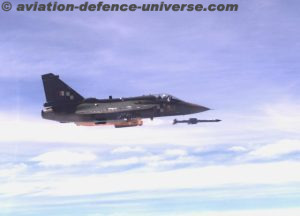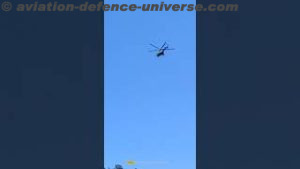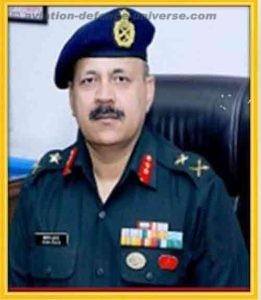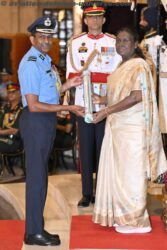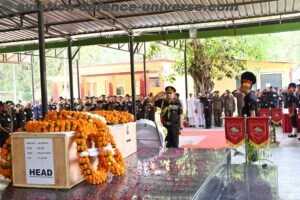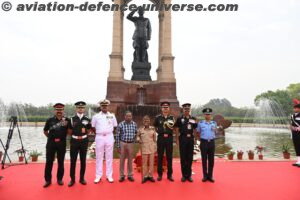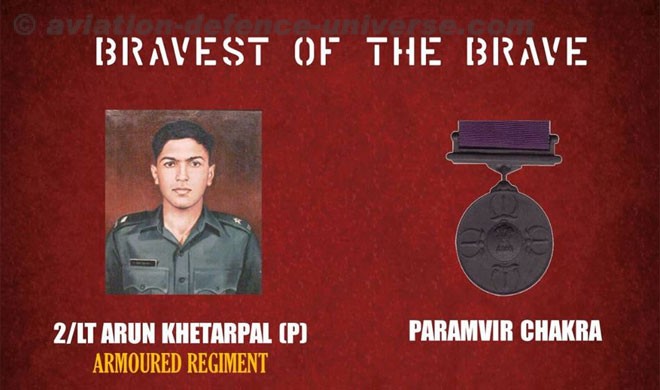
New Delhi. 14 October 2020. Arun Khetrapal is an iconic figure and a legendary name in the ethos of Indian Army . Second Lieutenant Arun Khetarpal, PVC (14 October 1950 – 16 December 1971) born in Pune, Maharashtra, was an officer of the Indian Army and a posthumous recipient of the Param Vir Chakra, India’s highest military decoration for valour in face of the enemy. He was martyred in action in the Battle of Basantar in the Battlefield of Shakargarh during the Indo-Pakistan War of 1971 where his actions earned him his honour.
He was born in Pune on 14 October 1950 and would have turned 70 years old today . His father Lt Col (later Brigadier) M. L. Khetarpal was a Corps of Engineers officer serving in the Indian Army and his family traced a long history of military service. Attending The Lawrence School, Sanawar, he distinguished himself both as an able student and sportsman and was the school prefect. Khetarpal joined the National Defence Academy in June 1967. He belonged to Foxtrot Squadron where he was the Squadron Cadet Captain of the 38th Course. His NDA No was 7498/F/38. He subsequently went on to join the Indian Military Academy. In June 1971, Khetarpal was commissioned into the 17 Poona Horse.
During the Indo-Pakistan War of 1971, the 17 Poona Horse was assigned to the command of the 47th Infantry Brigade of the Indian Army. Through the duration of the conflict, the 47th Brigade saw action in the Shakargarh sector in the Battle of Basantar.
Among the tasks set for the 47th Brigade was to establish a bridgehead across the River Basantar. By 21:00 hours of 15 December, the brigade had captured its objectives. However, the place was extensively mined, which prevented the deployment of the tanks of the Poona Horse, and the engineers clearing the mines were halfway through their tasks when Indian troops at the bridge-head reported alarming enemy armour activity, asking for immediate armour support. It was at this critical juncture that the 17 Poona Horse decided to push through the mine-field. The regiment was able to link-up with the infantry at the bridge-head by first light the next day.
At 08:00 hours on 16 December, Pakistani armour launched the first of their counter-attacks under the cover of a smokescreen at the pivot of the 17th Poona Horse at Jarpal. At 08:00 hours, the Pakistani 13th Lancers, equipped with the then state-of-the-art US-made 50 ton Patton tanks, launched the first of their counter-attacks under the cover of a smokescreen at ‘B’ Squadron, The Poona Horse, at Jarpal. Its squadron commander urgently called for reinforcements. Arun Khetarpal, who was in ‘A’ squadron and was stationed close by with his Centurion tank troop, responded with alacrity, as did the rest of his regiment. The first counter-attack was decimated by accurate gunnery, coolness by Indian tank troop and individual tank commanders from the CO, Lt Col Hanut Singh down to its troop leader, Arun Khetarpal. The 13th Lancers desperately launched two more squadron-level counter-attacks and managed to achieve a breakthrough.
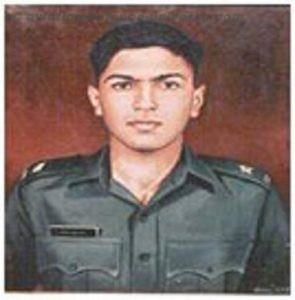
Khetarpal rushed to meet the Pakistani armour and launched right into the Pakistani attack. With his troop, he was able to run over the enemy advance with his tanks. However, the commander of the second tank was killed in this attack. Alone in charge, Khetarpal continued his attack on the enemy strongholds. The enemy fought very bravely and did not retreat even after taking losses. Disappointed by his failure so far, he desperately attacked the incoming Pakistani troops and tanks, knocking out a Pakistani tank in the process. However Pakistani forces regrouped and counter-attacked. In the ensuing tank battle, Lt. Arun Khetarpal with his 2 remaining tanks fought off and destroyed 10 tanks before he was killed in action.
The skirmish however took its toll on the lieutenant as he was hit by enemy fire, but instead of abandoning the tank he fought on destroying one final tank before he was finally overwhelmed. However, his actions had denied a vital breakthrough for Pakistani forces and instead put the Indians in a stronger position in the Shakargarh bulge. His final words over the radio to a superior officer who had ordered him to abandon his burning tank were,”No, Sir, I will not abandon my tank. My main gun is still working and I will get these bastards.”
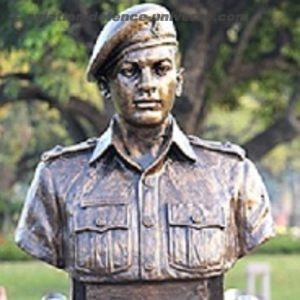
Then he set about destroying the remaining enemy tanks. The last enemy tank, which he shot, was barely 100 metres from his position. At this stage, his tank received a second hit and he was seriously injured. The officer met his death trying to deny the Pakistani Army its desired breakthrough.
Khetarpal’s body and his tank, named “Famagusta”, were later captured by Pakistan and eventually returned to the Indian military. This tank is on display back in India now.
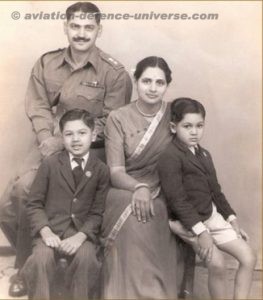
For his conspicuous bravery and extreme gallantry in the face of fierce and unrelenting attacks and assaults by the enemy (the Pakistani military), Khetarpal was honoured with India’s most-prestigious and highest-standard military medal for courage and gallantry, the Param Vir Chakra, posthumously. Arun Khetarpal’s body was cremated on 17 December near the Samba district and his ashes were sent to his family, who were unaware of his death until 26 December.
The crew of the Famagusta was Sowar Prayag Singh (the driver), Sowar Nand Singh (the radio operator), Sowar Nathu Singh (the gunner) and 2nd/Lt. Arun Khetarpal, the tank’s commander. Nand Singh was first casualty (killed in action; KIA) when the tank was fatally hit in the final encounter with Pakistani Army Major Nasser’s Patton tank. Arun was the second one to be killed after he sustained severe injuries when his tank was knocked out and eventually succumbed to his wounds. Both Prayag Singh and Nathu Singh were also badly wounded but survived and were captured by Pakistani troops who seized the Famagusta. Both men were later given medical treatment by their Pakistani captors and survived to the end of the war when they were repatriated and retired from the Indian Army as honorary captains.[citation needed]
The Param Vir Chakra citation on the Official Indian Army Website reads as follows:
CITATION
SECOND LIEUTENANT ARUN KHETARPAL POONAHORSE (IC-25067)
On 16 December 1971, the Squadron Commander of ‘B’ Squadron, the Poona Horse asked for reinforcement as the Pakistani Armour which was superior in strength, counter attacked at Jarpal, in the Shakargarh Sector. On hearing this transmission, Second Lieutenant Arun Khetarpal who was in ‘A’ Squadron, voluntarily moved along with his troops, to assist the other squadron. En route, while crossing the Basantar river, Second Lieutenant Arun Khetarpal and his troops came under fire from enemy strong points and RCL gun nests that were still holding out. Time was at a premium and as critical situation was developing in the ‘B’ Squadron sector, Lieutenant Arun Khetarpal, threw caution to the winds and started attacking the impending enemy strong points by literally charging them, overrunning the defence works with his tanks and capturing the enemy infantry and weapon crew at pistol point. In commander of his troop was killed. Second Lieutenant Arun Khetarpal continued to attack relentlessly until all enemy opposition was overcome and he broke through towards the ‘B’ Squadron position, just in time to see the enemy tanks pulling back after their initial probing attack on this squadron. He was so carried away by the wild enthusiasm of battle and the impetus of his own headlong dash that he started chasing the withdrawing tanks and even managed to shoot and destroy one. Soon thereafter, the enemy reformed with a squadron of armour for a second attack and this time they selected the sector held by Second Lieutenant Arun Khetarpal and two other tanks as the points for their main effort. A fierce tank fight ensured ten enemy tanks were hit and destroyed of which Second Lieutenant Arun Khetarpal was severely wounded. He was asked to abandon his tank but he realised that the enemy though badly decimated was continuing to advance in his sector of responsibility and if he abandoned his tank the enemy would break through, he gallantly fought on and destroyed another enemy tank. At this stage, his tank received a second hit which resulted in the death of this gallant officer. Second Lieutenant Arun Khetarpal was dead but he had, by his intrepid valour saved the day; the enemy was denied the breakthrough he was so desperately seeking. Not one enemy tank got through. Second Lieutenant Arun Khetarpal had shown the best qualities of leadership, tenacity of purpose and the will to close in with the enemy. This was an act of courage and self-sacrifice far beyond the call of duty.



































